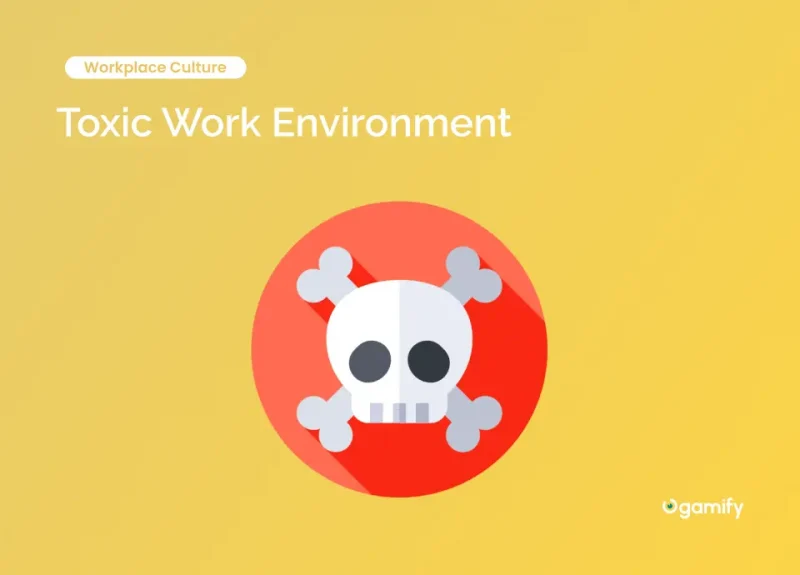Employee satisfaction, productivity, and overall organizational performance all require a positive work environment. However, not all firms promote a healthy environment, and some can become toxic, hurting employee well-being and performance. In this article, we will look at the 10 signs of a toxic workplace so that you may notice red flags and take action to change workplace culture.
What is Work Environment?
The work environment refers to the circumstances, surroundings, and atmosphere in which employees carry out their job obligations. It includes a variety of characteristics that can have a substantial impact on a person’s productivity, well-being, and job satisfaction. Collaboration, open communication, and mutual respect among coworkers and management define a positive work environment.
A workplace’s physical environment, such as office layout, lighting, and ergonomics, can have an impact on comfort and health. Furthermore, organizational culture is significant since it embodies the workplace’s common values, attitudes, and actions. A supportive culture encourages employee engagement and promotes a sense of belonging.

Signs of Toxic Work Environment
1. Excessive Micromanagement
Micromanagement is a classic sign of a toxic work environment. When employees are continuously scrutinized and not given the autonomy to make decisions, it creates a stifling and demoralizing atmosphere. This lack of trust can lead to decreased motivation, disengagement, and lower job satisfaction.
2. Lack of Open Communication
Communication is often one-sided or non-existent in a toxic workplace. Employees may be afraid to speak up, offer their perspectives, or express their worries. This lack of open communication can result in misunderstandings, disputes, and a sense of being undervalued.
3. Persistent High Levels of Stress
Although a certain level of stress is typical in the workplace, prolonged and unmanaged stress can have adverse effects on employees’ mental and physical well-being. If not addressed appropriately, stress may result in burnout, increased absenteeism, and reduced productivity.

4. Bullying or Harassment
A toxic work environment may enable or even encourage bullying or harassment. This behavior can be overt or subtle and can involve actions, words, or exclusionary practices. Such incidents create a hostile environment, impacting both the targeted employees and those witnessing the mistreatment.
5. Lack of Recognition and Appreciation
Employees can feel undervalued and demotivated when their efforts and accomplishments go unnoticed or unappreciated. A lack of acknowledgment can result in lower job satisfaction, higher turnover, and a drop in overall team morale.
6. High Turnover Rates
A workplace with consistently high turnover rates may indicate underlying issues. Employees tend to leave toxic environments in search of more positive and supportive workplaces. Frequent turnover can be costly for organizations and negatively impact team cohesion.

7. Favoritism and Unfair Treatment
Favoritism and unequal treatment may be rampant in a toxic work environment. When select employees are given preferential treatment or are favored by management, it produces a sense of injustice and a lack of trust in the organization’s impartiality.
8. Lack of Work-Life Balance
Employee fatigue and dissatisfaction may result from a work environment that disregards work-life balance. Employees’ general well-being suffers when they are obliged to work long hours on a continuous basis, have limited time off, or are unable to take breaks, affecting both their personal and professional life.
9. Lack of Career Growth Opportunities
When employees feel stuck in their roles without opportunities for growth or advancement, it can lead to stagnation and frustration. A lack of career development prospects can cause valuable employees to seek opportunities elsewhere.
10. Gossip and Office Politics
A toxic work environment often breeds gossip and office politics, which can be highly detrimental to team dynamics and employee morale. Rumors, cliques, and backstabbing behavior erode trust and create a negative atmosphere.

Strategies for Fostering a Healthy Workplace Culture
If you recognize any of these signs in your workplace, it’s crucial to take proactive steps to foster a healthier workplace culture:
Encourage Open Communication
Promote open and honest communication channels where employees feel comfortable sharing their thoughts and concerns without fear of repercussions.
Implement Recognition Programs
Recognize and appreciate employee contributions regularly. Implement rewards and recognition programs to acknowledge outstanding work.
Provide Training on Stress Management
Offer stress management workshops and resources to help employees cope with work-related pressures effectively.
Set Clear Performance Expectations
Establish transparent performance expectations and provide regular feedback to empower employees to make informed decisions.

Create a Zero-Tolerance Policy for Harassment
Create a clear zero-tolerance policy for bullying and harassment, and make sure that all workers understand the consequences of such behavior.
Offer Work-Life Balance Initiatives
Support work-life balance by offering flexible work hours, remote work options, and opportunities for personal development.
Invest in Employee Growth
Provide opportunity for employees to improve their abilities and advance their careers within the organization through training and development.
Lead by Example
Encourage leadership to model positive behavior and demonstrate a commitment to a healthy workplace culture.
Conclusion
Recognizing a toxic work environment is vital for employee well-being and organizational success. By addressing red flags and fostering a positive workplace culture, we can create a thriving and supportive atmosphere for all. Let’s build a better work environment together!
FAQ
What is a toxic work environment?
A toxic work environment refers to a workplace where negativity, stress, and harmful behavior prevail. It’s a place where employees feel demotivated, undervalued, and subjected to harassment or unfair treatment. Such an atmosphere can significantly impact employee well-being and productivity.
What are the signs of a toxic work environment?
Signs of a toxic work environment include excessive micromanagement, lack of open communication, persistent high levels of stress, bullying or harassment, lack of recognition, high turnover rates, favoritism, and a lack of work-life balance.
How does a toxic work environment affect employees?
A toxic work environment can have detrimental effects on employees’ mental and physical health. It can lead to decreased job satisfaction, increased stress levels, burnout, and a higher likelihood of employees leaving the organization.
What are some strategies for improving workplace culture?
To foster a healthier workplace culture, organizations can implement strategies such as promoting open communication, offering recognition programs, providing stress management resources, setting clear performance expectations, creating a zero-tolerance policy for harassment, supporting work-life balance initiatives, investing in employee growth, and leading by example.
How can employees cope with a toxic work environment?
Employees can cope with a toxic work environment by seeking support from colleagues, supervisors, or HR, setting boundaries to protect their well-being, focusing on self-care and stress management, and exploring opportunities for personal and professional development outside of work.

